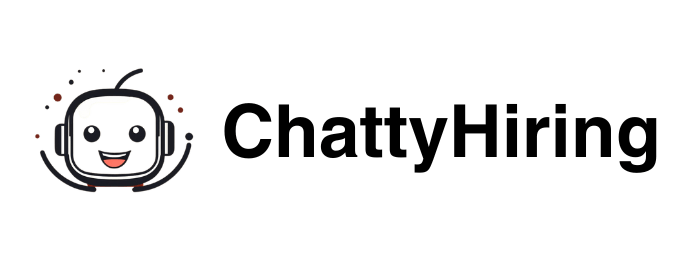Finding the best people for a job is important, and if you’ve ever read through dozens of resumes, you know how daunting it can be. Artificial intelligence (AI) recruiting tools, such as a CV screener, can help automate this process, making recruitment faster and more efficient. It allows recruiters to save time by quickly filtering through a large number of job applications.
This enables talent acquisition teams to focus on evaluating only the most relevant top candidates, rather than spending extra time manually reviewing every document.

However, AI recruitment software and applicant tracking systems (ATS) are not perfect, and it is important to understand the pros and cons before implementing this new AI recruitment software.
AI hiring software might overlook qualified applicants who don’t use the right keywords or have unconventional resumes. While these recruiter AI tools improve objectivity in candidate evaluation, they can also introduce new biases if not properly managed.
What is a CV Screener?
CV screeners assist recruiters in managing large volumes of applications efficiently and with minimal manual effort. They use AI recruitment software tools to scan resumes and highlight candidates who best match the job criteria.
These recruiting automation software vary in complexity, from simple keyword matching to advanced AI-driven analysis.
CV screeners are often part of a broader applicant AI. The ATS collects resumes, parses information, and ranks candidates. The CV screener looks for skills, past jobs, and keywords. It then makes a list. The best matches go to the top. This helps companies identify the best resumes immediately and enables recruiters to focus on candidates who meet the essential job requirements.
This hiring automation streamlines the process of reviewing every resume manually, reducing the time spent on each one and helping to handle a high volume of applicants.
Types of Screening Tools
There are several types of screening tools used in hiring:
- Basic Resume Parsers: Extract text from resumes and organize it into standardized fields.
- Keyword Matchers: Search resumes for specific words or phrases to filter candidates.
- AI-Powered Screeners: Use artificial intelligence to assess the relevance of resumes beyond keywords, considering factors like synonyms and experience levels.
- Integrated Recruitment Software: Combines screening with interview scheduling, communication, and analytics.
Each type offers different levels of automation and accuracy for hiring automation. Choosing the right tool to automate hiring process depends on company size, hiring volume, and the complexity of the roles.

Pros: Good Things About Screeners and AI Recruiting Tools
1. Saves Time and Work
AI recruiting tools can read hundreds of resumes fast. AI recruitment software does the first step in picking people. It helps teams find the best workers without lots of reading. Applicant AI makes work quicker and less stressful for everyone. Imagine having an assistant who handles all the tasks you don’t want to do. That’s exactly what the ATS does.
2. Fair Choices
Using AI hiring software gives everyone a fair chance. The computer uses the same rules for every resume. It does not pick favorites. This helps companies follow fair hiring rules and helps with diversity. Humans have inherent unconscious biases that are extremely hard to remove. The recruiter AI eliminates the chance of a candidate losing an opportunity because of a factor they cannot control.
3. Handles Many Resumes
When many people apply, it is easy to get lost. Recruiter AI and recruitment AI software sort out all the resumes. No one is forgotten. Automated recruitment tools are good for big companies and busy times. Top companies have started using AI for high-volume hiring, maybe it’s time for you to adopt it too.
4. Finds Important Words
Job ads ask for special skills and requirements. Maybe you are looking for someone who can speak both Spanish and English, or maybe you are looking for someone with 3+ years of industry experience. Say that! If a company is looking for a specific keyword in a candidate’s resume, the CV screener looks for it. Some AI recruiting tools can even find similar words to reach a broader audience.
5. Saves Money
It is expensive to pay a recruiter to read resumes all day. Automated recruitment tools can complete this task much faster. This allows teams to hire more people with fewer resources. The volume of candidates can be easily tamed with this recruitment software.
6. Tracks Data
Recruitment AI software keeps good records. Directors and recruiters can see how many people apply, how many are chosen, and where they find the best workers. This helps make better hires next time. Tracking data is crucial for replicating successes and preventing failures. Seeing the progress that is being made can also encourage a team and support the development of new tools and processes.
Cons: Problems with Screeners and AI Recruitment
1. Might Miss Good Candidates
Not everyone uses the exact words on their resumes. AI recruitment software might skip a great candidate if they use different words than the system is programmed to look for. Sometimes, the computer cannot guess if a person would be good just by reading. In these cases, a human recruiter is beneficial. Thus, the hybrid use of AI hiring software to perform the initial steps, such as screening and resume parsing, paired with manual review by a recruiter, is the most effective method.
2. Can Have Unfair Bias
AI recruiting tools learn from old data. If old hiring practices were not fair, the tool might continue to make the same mistakes. Often, once a company implements an AI system like that, it does not spend time and resources on updating it frequently, if at all. Recruitment AI software can sometimes favor one group over another unintentionally.
3. Feels Too Automatic
Some people feel sad when they never hear back after applying for a job or completing an interview. Recruiting automation software may not always send a reply to a candidate if they are not prompted to. It can feel cold or unfriendly for job seekers. Human recruiters may also run into the same problem if they are trying to balance being responsive with reading hundreds of resumes. Using an ATS allows human recruiters the time and opportunity to focus more on the human connection in hiring, rather than the tedious task of parsing resumes.
4. Needs Good Setup
AI recruitment software must be set up correctly to function appropriately and benefit both recruiters and candidates. If the rules are incorrect, good workers can be overlooked. Directors should regularly check the tool and make adjustments as needed. Humans should review every aspect of the automation process thoroughly to ensure optimal performance.
5. Data Safety Worries
People care about who sees their resumes; they don’t want them leaked to any random person or system on the internet. AI recruitment software must keep private data safe. Companies need to use AI recruiting tools that are careful with information.

Quick List: Pros and Cons
| Pros of CV Screener and AI Recruiting Tools | Cons of CV Screener and AI Recruiting Tools |
| Saves time and work | Might miss good candidates |
| Helps with fair choices | Can have unfair bias |
| Handles many resumes | Feels too automatic for some |
| Finds important keywords | Needs good setup |
| Saves money | Data safety worries |
| Keeps good records and data | Not perfect without people |
Impact on Candidate Experience
Using a CV screener changes how candidates interact with job applications. It affects how clear the process feels and how well the system fits individual job seekers’ profiles.
Both transparency and the ability to personalize the experience play key roles in shaping candidate satisfaction.
Transparency and Fairness
Transparency in candidate screening software means candidates should understand how their CVs are evaluated. When systems clearly show what skills or criteria are used, candidates trust the process more.
Lack of transparency can lead to frustration if job seekers feel their applications vanish without feedback.
Fairness is tied to unbiased data handling. Tools must avoid favoring certain candidate profiles over others without valid reasons.
Screening tools that rely heavily on keyword matching might overlook qualified individuals who describe their skills differently. Clear communication about how resumes are scored or filtered helps candidates see the fairness in the process.
Transparency and fairness combined build confidence and encourage more candidates to apply.
Customization and Personalization
Customization allows recruiters to adjust screening criteria based on the job’s unique needs. This makes candidate screening software more accurate in identifying the right talent.
Personalization means the tool can recognize different ways candidates show their skills and experiences.
For example, some systems can assess candidates by looking beyond keywords. They include skills assessments or parse various formats in candidate profiles.
This respect for individual differences improves the candidate experience.
Without customization, tools risk rejecting qualified applicants due to rigid filters. Personalization also helps job seekers feel their application is reviewed thoughtfully, not just by an automated system.
This can encourage more engagement and reduce drop-out rates in recruitment.
Role of Human Interaction in the Hiring Process
Human interaction plays a crucial part in hiring decisions, even when a CV screener handles initial tasks. It helps assess qualities like cultural fit and soft skills that machines cannot measure.
The right balance between automation and human judgment improves candidate evaluation and strengthens the recruitment process.
Balancing Automation with Human Judgment
Automating with a CV screener saves time by quickly filtering resumes based on set criteria. However, they can miss subtle but important factors like communication skills or candidate motivation.
Human recruiters examine these less tangible traits during interviews or follow-up reviews.
This balance ensures the efficiency of automation while keeping the process personalized. Humans identify potential biases in automated results and adjust evaluations accordingly.
The hiring process becomes both faster and more thorough by combining the strengths of technology and human experience.
Manual Review vs. Automated Screening
Manual review involves hiring professionals reading resumes and judging candidates based on experience, skills, and fit for the role. This method allows for a detailed understanding but can be slow and inconsistent.
Automated screening handles large volumes of applications swiftly, applying uniform standards with less fatigue. Yet, it risks overlooking unique candidate qualities or misinterpreting data formats.
Using automated screening to do the first round of sorting, followed by manual review of shortlisted candidates, helps improve accuracy and fairness in candidate evaluation.
This approach uses technology to support human recruiters rather than replace them.
For more on balancing automation with human efforts, see this explanation on AI in hiring from robertwalters.ie.
Enhancing Screeners with AI and Machine Learning
Modern CV screeners use artificial intelligence and machine learning to improve the way resumes are analyzed. These advancements help reduce human errors and better match candidates to job requirements by understanding data patterns and language nuances.
Bias Detection and Mitigation
AI recruitment tools apply machine learning to identify and reduce biases in candidate screening. Traditional CV screeners might favor certain demographics or keywords, but advanced systems can detect patterns that suggest bias.
For example, they can flag language linked to gender or ethnicity bias and adjust scoring to promote fairness.
These tools continuously learn from data, improving their ability to spot bias over time. This helps companies meet diversity goals without sacrificing candidate quality.
However, bias detection depends on the quality of training data and algorithms, so ongoing monitoring remains essential.
Natural Language Processing and Resume Parsing
Natural language processing (NLP) lets applicant tracking systems read and interpret resumes more like a recruiter would. Instead of just searching for exact keywords, NLP analyzes the context and meaning behind phrases.
This approach allows for a better match between job descriptions and candidate competencies. It helps talent acquisition teams identify top talent more efficiently.
Resume parsing breaks down CVs into structured data by extracting key info like education, work history, and core skills. AI-driven parsing can handle a variety of formats and writing styles, making candidate screening tools more accurate and efficient.
This technology speeds up the hiring process by automating data extraction and cutting down on manual resume review.
Ethical and Data Privacy Considerations
Using a CV screener means paying close attention to how candidate information is handled. HR professionals have a duty to protect sensitive data and ensure fair treatment for all applicants.
Data Security and Privacy Risks
Candidate data stored in screening platforms is at risk of unauthorized access or breaches. Employers need to use strong encryption and secure servers to keep this information safe.
Not doing so can result in legal trouble under regulations like GDPR. Data sharing between systems brings additional risks, especially if the data crosses borders without the right protections.
Organizations should control who can access applicant files and keep a close eye on all data transfers. Being transparent with candidates about what data is collected and how it’s used builds trust and meets legal requirements for informed consent.
Ethical Implications for HR Professionals
HR teams must make sure that AI-powered screeners don’t introduce bias into the selection process. Algorithms can unintentionally favor or exclude candidates based on demographics like race, gender, or age.
It’s important to regularly audit AI tools for fairness and accuracy. Keeping a human in the loop during decision-making helps prevent overreliance on automation.
HR should balance efficiency with empathy to maintain respect for every candidate. Protecting candidate data from misuse is also essential.
Clear policies on data retention and disposal help safeguard privacy beyond the screening stage.
Best Practices for Successful Screening
Efficient CV screening depends on clear job descriptions and solid evaluation tools. These elements help recruiters quickly identify candidates with the right qualifications and cultural fit.
Using specific criteria and structured assessments can boost the quality of hires and save valuable time.
Optimizing Job Descriptions
An excellent job description is essential for accurate CV screening. It should outline must-have skills, core responsibilities, and required experience levels.
Including targeted keywords and certifications helps both screening algorithms and recruiters find the best matches. Avoid vague language and use measurable criteria like “3+ years in project management” or “proficiency in Excel.”
This approach cuts down on unqualified applicants and speeds up the review process. Regularly updating job descriptions ensures they reflect current market needs and the true demands of each position.
Integrating Pre-Employment Assessments
Adding pre-employment assessments alongside CV screening can boost candidate evaluation. Skills assessments or testing measure relevant abilities that a CV alone can’t reveal.
This confirms whether the candidate actually meets job-specific requirements. Combining screening tools with assessments helps reduce bias and subjectivity during talent acquisition.
For example, technical skills tests or situational judgment assessments give a realistic measure of how candidates will perform on the job. Using these assessments early in the process streamlines workflows and supports excellent hiring decisions.
